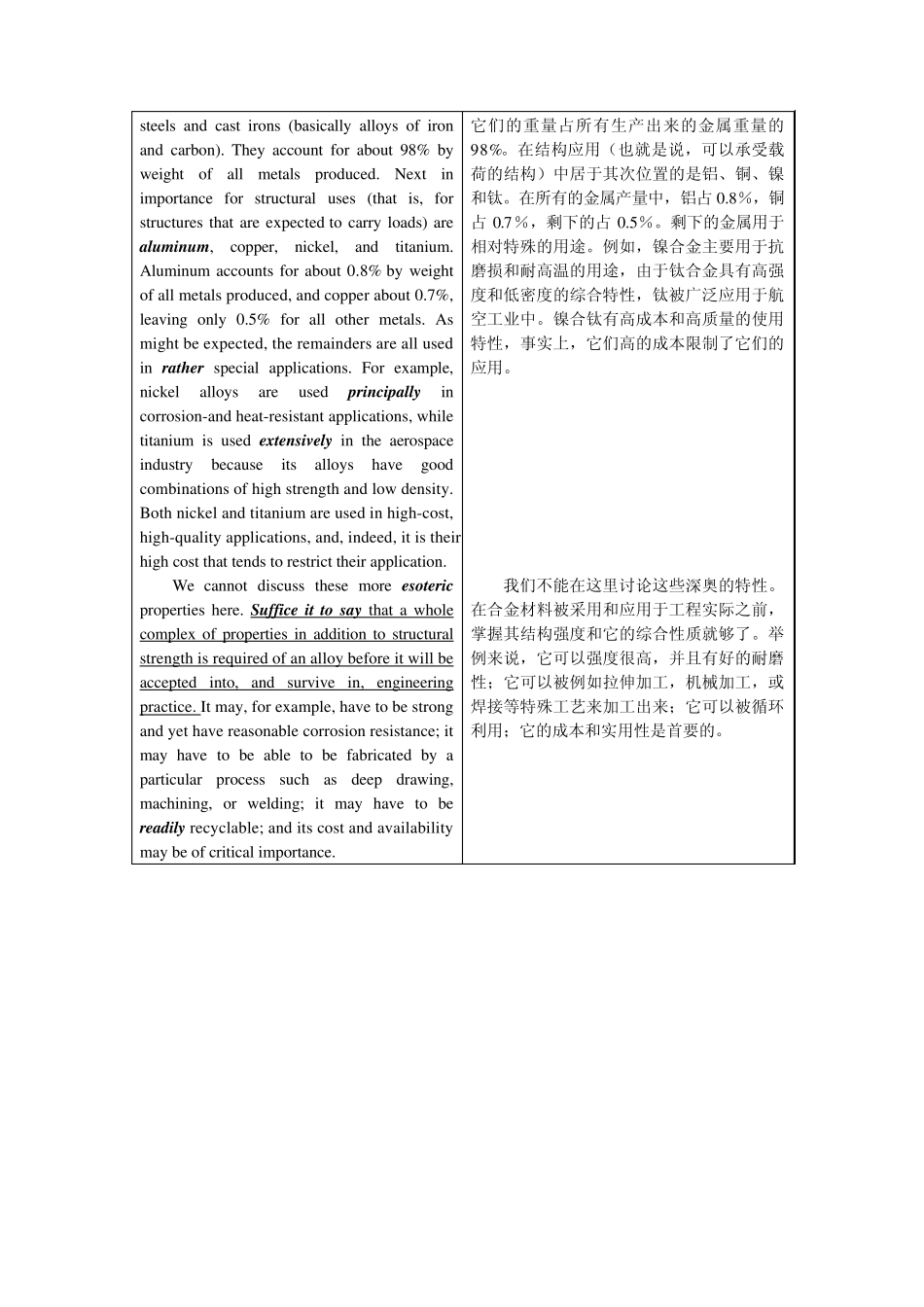Unit 1 Metals 金属 The use of metals has always been a key factor in the development of the social systems of man. Of the roughly 100 basic elements of which all matter is composed, about half are classified as metals. The distinction between a metal and a nonmetal is not always clear-cut. The most basic definition centers around the type of bonding existing between the atoms of the element, and around the characteristics of certain of the electrons associated with these atoms. In a more practical way, however, a metal can be defined as an element which has a particular package of properties. Metals are crystalline when in the solid state and, with few exceptions (e.g. mercury), are solid at ambient temperatures. They are good conductors of heat and electricity and are opaque to light. They usually have a comparatively high density. Many metals are ductile-that is, their shape can be changed permanently by the application of a force without breaking. The forces required to cause this deformation and those required to break or fracture a metal are comparatively high, although, the fracture forces is not nearly as high as would be expected from simple consideration of the forces required to tear apart the atoms of the metal. One of the more significant of these characteristics from our point of view is that of crystallinity. A crystalline solid is one in which the constituent atoms are located in a regular three-dimensional array as if they were located at the corners of the squares of a three-dimensional chessboard. The spacing of the atoms in the array is of the same order as the size of the atoms, the actual spacing being a characteristic of the particular metal. The directions ...


